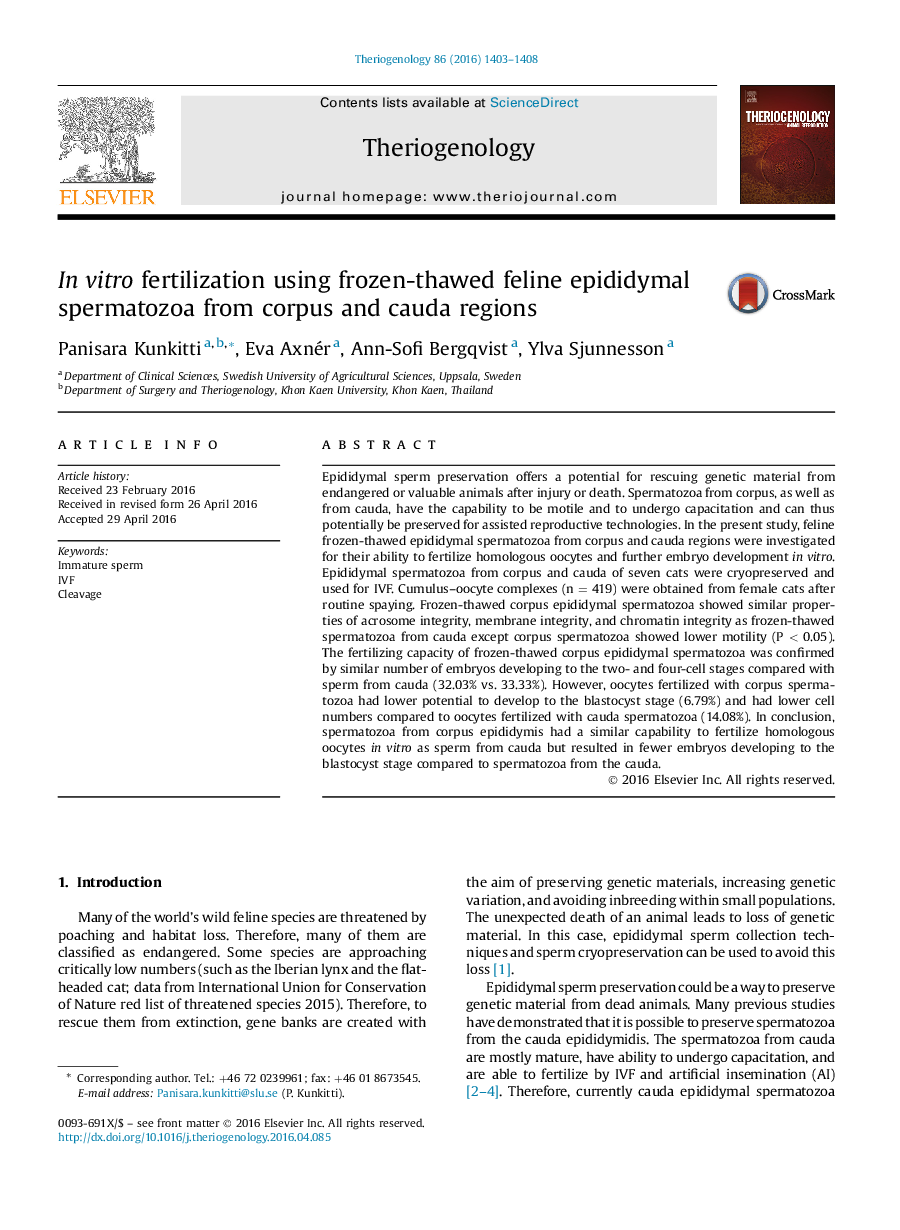| کد مقاله | کد نشریه | سال انتشار | مقاله انگلیسی | نسخه تمام متن |
|---|---|---|---|---|
| 2094675 | 1401371 | 2016 | 6 صفحه PDF | دانلود رایگان |
Epididymal sperm preservation offers a potential for rescuing genetic material from endangered or valuable animals after injury or death. Spermatozoa from corpus, as well as from cauda, have the capability to be motile and to undergo capacitation and can thus potentially be preserved for assisted reproductive technologies. In the present study, feline frozen-thawed epididymal spermatozoa from corpus and cauda regions were investigated for their ability to fertilize homologous oocytes and further embryo development in vitro. Epididymal spermatozoa from corpus and cauda of seven cats were cryopreserved and used for IVF. Cumulus–oocyte complexes (n = 419) were obtained from female cats after routine spaying. Frozen-thawed corpus epididymal spermatozoa showed similar properties of acrosome integrity, membrane integrity, and chromatin integrity as frozen-thawed spermatozoa from cauda except corpus spermatozoa showed lower motility (P < 0.05). The fertilizing capacity of frozen-thawed corpus epididymal spermatozoa was confirmed by similar number of embryos developing to the two- and four-cell stages compared with sperm from cauda (32.03% vs. 33.33%). However, oocytes fertilized with corpus spermatozoa had lower potential to develop to the blastocyst stage (6.79%) and had lower cell numbers compared to oocytes fertilized with cauda spermatozoa (14.08%). In conclusion, spermatozoa from corpus epididymis had a similar capability to fertilize homologous oocytes in vitro as sperm from cauda but resulted in fewer embryos developing to the blastocyst stage compared to spermatozoa from the cauda.
Journal: Theriogenology - Volume 86, Issue 6, 1 October 2016, Pages 1403–1408
